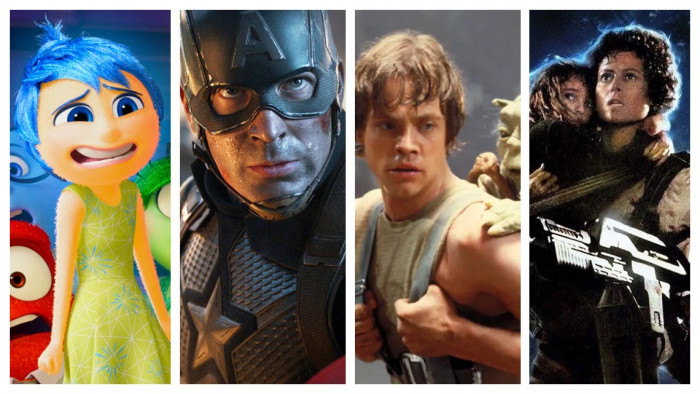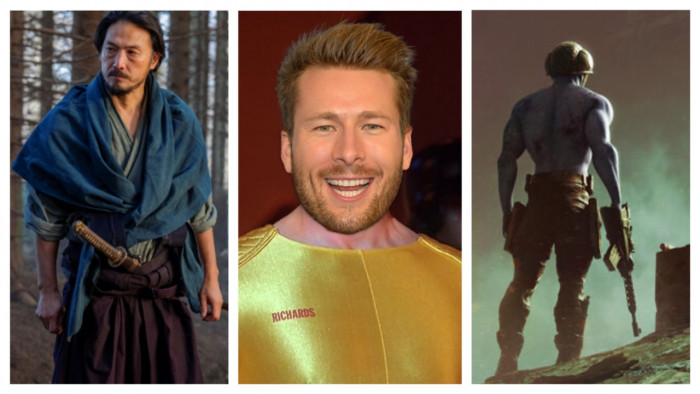Becoming typecast is a huge concern for an actor. Unless you have the mesmeric versatility of, say, Phillip Seymour Hoffman, William H Macy or Danny Dyer, the fear of being landed in the same role over and over again is a constant threat.
The same goes in the animal kingdom. While multi-faceted creatures such as dogs are allowed to portray characters as varied as Scooby Doo, Beethoven and Brian Griffin, many of their four-legged friends are unfairly pigeon-holed and only ever sent one kind of script. Here, we examine the most unfortunate victims of this lazy cinematic prejudice.
(Images: Rex Features, All Star, YouTube)

Weasels
Character type: Snide, villainous henchmen
Examples: The weasels in The Wind in the Willows, the weasels in Who Framed Roger Rabbit
If your name openly suggests a certain character trait, it makes it difficult for casting directors to think of you as anything else. For instance, it would be tough to cast an actor named Barry Leading-Man as anything other than a protagonist. Or a bloke called John Wacky-Sidekick as anything but... You get the picture. Anyway, since 'weasley' has come to mean snide, cowardly and generally unpleasant, these types of roles are all the poor weasel is ever offered. To add insult to injury, they're never considered for the main bad guy - only his nasty, spiteful henchmen.

Bears
Character type: Slightly dim, big-hearted, fun-loving clowns.
Examples: Yogi Bear, Baloo in The Jungle Book, Little John in Robin Hood, Humphrey Bear in the Disney cartoons.
Despite clearly being capable of ripping a human to shreds in a matter of seconds, bears are rarely given the chance to play vicious characters. Instead, their traditional big screen fodder is the clumsy, cuddly, goofy-but-lovable comic relief. This stereotype even reaches into the realms of fantasy; when designing their big-hearted, fun-loving lead for Monsters Inc, Pixar’s animation team went for a giant, furry chap who closely resembled a stock cinematic bear.

Lions
Character type: Wise, fatherly figures
Examples: Aslan in The Lion, the Witch and the Wardrobe, Mufasa in The Lion King, King Richard in Robin Hood
Lion. The very word invokes pride, courage and confidence. You’d never find a lion that wasn’t sure about where its life was headed. Or a lion that dossed about on the sofa all day, eating Ricicles and watching Lovejoy. Lions are renowned for being strong-minded, reliable and serious, and this stereotype has limited their big screen options no end. Who knows, there might be hundreds of lions out there with great talent for playing slapstick buffoons or nervous, Woody Allen types, but they’ll never get the chance. It’s sad, really.

Rabbits
Character type: Cheeky, wise-cracking rogues
Examples: Bugs Bunny, Roger Rabbit, Thumper in Bambi, Skippy in Robin Hood
There’s something undeniably cheeky about rabbits. It might be the over-sized front teeth. It could be the fluffy tails. It may even be their reputation for being enthusiastic, energetic lovers. Whatever it is, their widely-recognised stereotype as quirky, lovable clowns is embedded deeply in the minds of Hollywood’s producers. Whether they’re playing hapless berks like Roger Rabbit, or confident, happy-go-lucky types like Bugs Bunny, rabbits are generally the first creature to get the call if a zany, wise-cracking jester is required.

Cats
Character type: Evil bastards
Examples: Tom in Tom & Jerry, Sylvester in Looney Tunes, the cats in Cats & Dogs, Blofield’s white cat in the James Bond films
OK, some felines have shrugged off this stereotype to enjoy broader, more varied roles. Garfield, for instance, is not an evil bastard. He's a lackadaisical lasagne fan. However, despite the occasional anomaly, the majority of cinematic cats are just plain horrible. Even Top Cat, with his clever one-liners and stylish clothes, was essentially just a greedy, law-breaking gangster. Why is this? Perhaps it’s the fact that their closest domestic rival, dogs, are so irrepressibly, tongue-waggingly jolly all the time. Or maybe it's because they're always so bloody sulky. Whatever it is, it's giving their species less and less scope for an Oscar.

Owls
Character type: Puffed-up know-it-alls
Examples: Archimedes in The Sword and the Stone, Wise Owl in Little Grey Rabbit, Owl in Animals of Farthing Wood
Why, exactly, do owls have a reputation for being so wise? Sure, they can rotate their heads 360 degrees. But so could the little girl in The Exorcist, and you never saw her on QI, did you? And there’s nothing particularly clever about coughing up pellets made of mouse bones and fur, either. In fact, it seems downright idiotic. Anyway, this inexplicable reputation for sagacity has landed our hooty feathered friends with slim pickings when it comes to character choice. Unless they’re happy to be considered as jumped-up, insufferable know-it-alls, they’ll soon be seeking new representation.

Moles
Character type: Short-sighted, shy introverts
Examples: Bottles in Banjo & Kazooie, Mole in The Wind in the Willows, the mole in Animals of Farthing Wood
Here's a quick newsflash for cartoon screenwriters: just because you’re blind and you spend 80% of your life rummaging about in soil, it doesn’t immediately make you a social inadequate. There are probably tons of moles across the planet who are gregarious, party-loving jokers. However, they only ever see themselves portrayed on screen - and even in video games - as squinty, mumbling wallflowers. What sort of effect must that have on young, cinema-going moles? A negative one, that's what sort.

Snakes
Character type: Sinister bad guys
Examples: Kaa in The Jungle Book, Sir Hiss in Robin Hood, King Hiss in The Masters of the Universe, Voldemort in Harry Potter, Medusa's hair
Ever since Adam caved in to apple-based reptilian peer pressure in the Garden of Eden, snakes have had to face horrific prejudice. And that prejudice is just as strong on-screen as it is off. From Snakes on a Plane to Anaconda, the big slippery worms are constantly cast as the baddies. The most shameless typecasting of the creature can be found in the popular Harry Potter franchise, where the snake-crested Slytherin House produces only black-hearted villains, and even a basic grasp of serpentine language usually renders you a certified wrong 'un.

Mice
Character type: Cute, brave, plucky have-a-go-heroes
Examples: The church mice in Robin Hood, Reepicheep in The Chronicles of Narnia, Fievel in An American Tail: Fievel goes West
As Joe Pesci proves in Goodfellas, the most diminutive cinematic characters can sometimes be the most fiery. For some reason, despite displaying no real-life traits of heroism or bravery, mice seem only to be cast as gung-ho daredevils, who are willing to square up to animals two hundred times their size at the drop of a hat. Place a live mouse next to a live cat and you'll soon find out how realistic a portrayal of the miniature rodent this really is.
Latest
Related Reviews and Shortlists


The 10 best war movies of the 21st century









